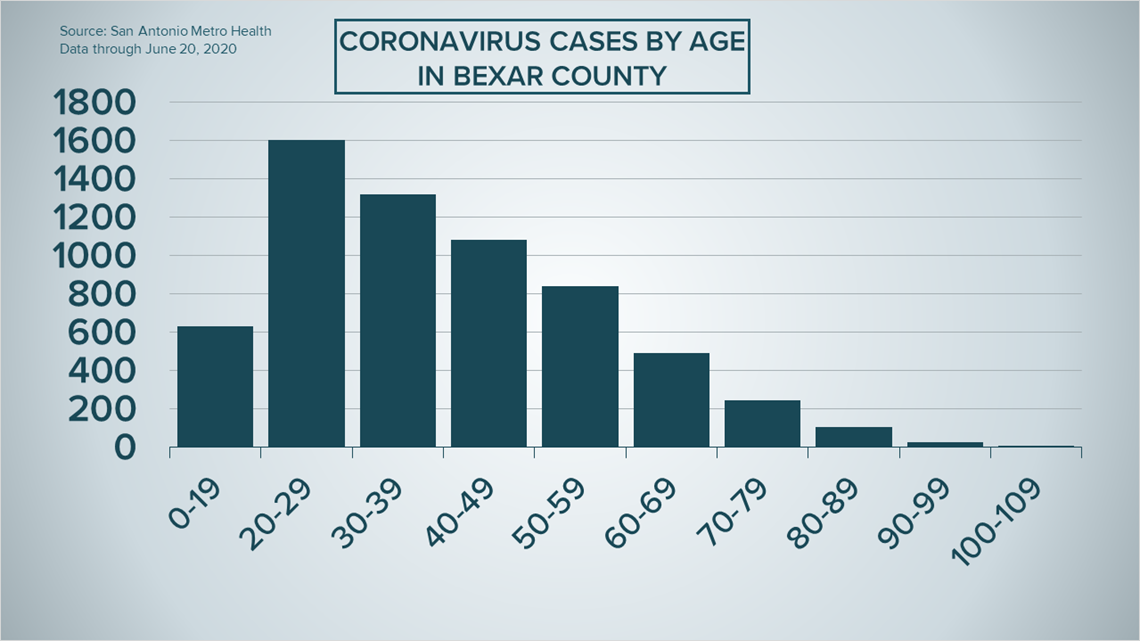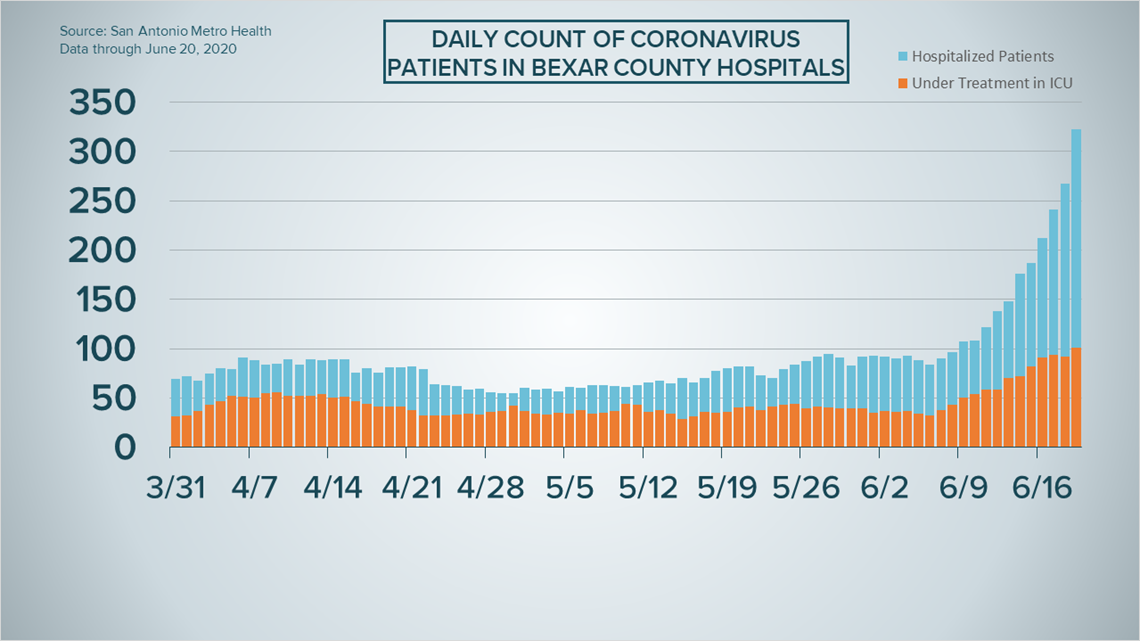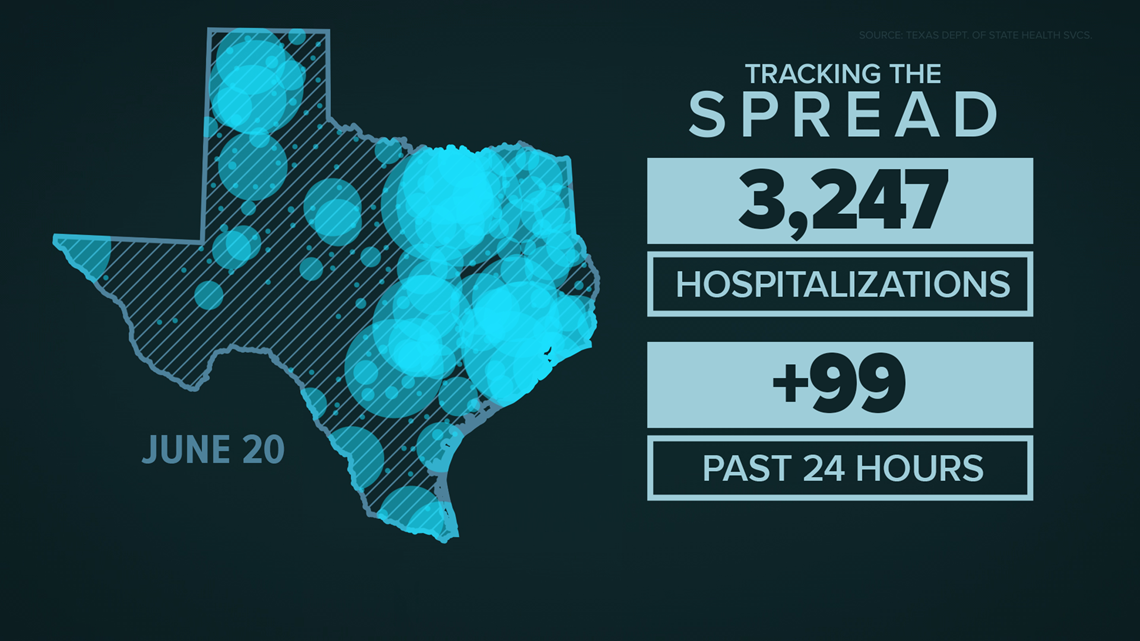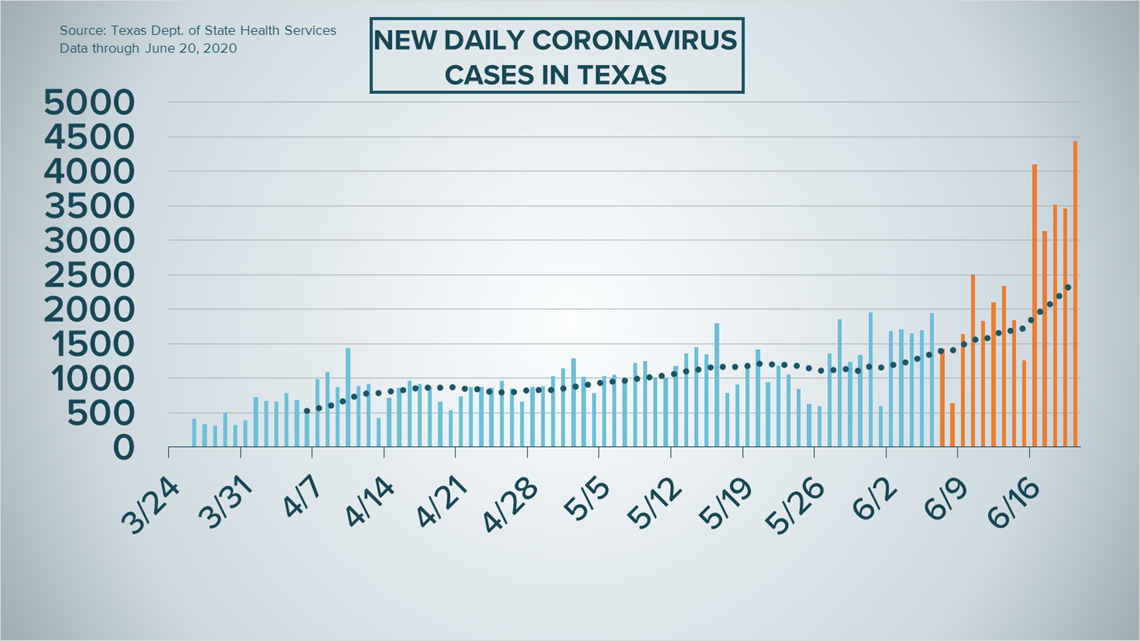SAN ANTONIO — We're tracking the latest numbers from the coronavirus pandemic in San Antonio and across Texas. Here are the latest numbers reported by Bexar and surrounding counties:
- Bexar County: Another 382 new cases and no new deaths were reported Friday; there is a total of 6,344 cases and 96 fatalities. 336 patients are in the hospitals, and 111 are in intensive care.
- Comal County: 40 new confirmed cases were reported Saturday. The count's total has now risen to 346 confirmed cases with and additional eight probable cases. Seven people have died in the county, while 166 have recovered. The county's positivity rate is up to 7.1%, the highest since April 23.
- Hays County: 103 new cases Friday, bringing the total to 1,551 cases and five fatalities in the county. 54% of the country's confirmed cases are people between the ages of 20 and 29. 51 additional recoveries were reported Friday, bringing the total number of residents recovered to 389.
Metro Health reported an additional 382 cases on Saturday evening, bringing the total in Bexar County to 6,344 amid surging positivity rates.
Here are Saturday's full numbers. Bexar County reports them daily at 7 p.m.
How Bexar County is trending:
We're tracking how many coronavirus cases are confirmed in Bexar County each day from the time San Antonio Metro Health began reporting cases more than two months ago. Graphing those daily case numbers along a 14-day moving average provides an accurate picture of the curve in the San Antonio area and the direction we're heading amid the coronavirus.


In addition, COVID-19 patients are trending younger. As of Saturday, 56% of all Bexar County residents diagnosed are younger than 40 years old. The majority of those who have passed from virus-related complications are still 60 years of age and up.


There is also a slight uptick on Saturday of Bexar County residents currently hospitalized with the coronavirus. 336 are currently in local hospitals.


Coronavirus in Texas
The total number of cumulative coronavirus cases in Texas rose by 4,430 on Saturday – the highest daily totaly in the ongoing pandemic – as the total surpassed 107,000. It marks the fifth day in a row that at least 3,000 new lab-confirmed cases were reported by state health officials; there were no such days before Tuesday.
25 more fatalities were also reported for the Lone Star State on Saturday. In total, 2,165 Texans have died from virus-related complications.


Meanwhile, another 99 Texans were admitted to hospitals with the virus over the last 24 hours. On Saturday, neartly 3,250 were hosptialized.


Here's a look at the 14-day moving average of the new daily coronavirus cases in Texas:


LATEST CORONAVIRUS HEADLINES:
- 6 staffers setting up for Trump Tulsa rally positive for COVID-19
- South Texas Blood & Tissue Center donor service employee tests positive for COVID-19
- These states require face masks be worn in public
- Road trip anyone? Texas Hill Country seems to be at the top of people's lists amid the coronavirus pandemic
- 'We need to take this seriously': Nirenberg joins other Texas mayors in penning letter to state as cases surge
- As COVID-19 cases surge in San Antonio, so too is the demand for testing
- Bars, gyms, car dealerships are major contributors to San Antonio coronavirus surge, officials say
- This week in Texas: Counties begin issuing mask orders for businesses
- Brazil tops 1 million COVID-19 cases, joining only US
Coronavirus symptoms
The symptoms of coronavirus can be similar to the flu or a bad cold. Symptoms include fever or chills, cough, shortness of breath or difficulty breathing, fatigue, muscle or body aches, headache, new loss of taste or smell sore throat, congestion or runny nose, nausea or vomiting and diarrhea, according to the Centers for Disease Control.
Most healthy people will have mild symptoms. A study of more than 72,000 patients by the Centers for Disease Control in China showed 80 percent of the cases there were mild.
But infections can cause pneumonia, severe acute respiratory syndrome, kidney failure, and even death, according to the World Health Organization. Older people with underlying health conditions are most at risk.
The CDC believes symptoms may appear anywhere from two to 14 days after being exposed.
Human coronaviruses are usually spread...
- Between people who are in close contact with one another (within about 6 feet).
- Through respiratory droplets produced when an infected person coughs, sneezes or talks. These droplets can land in the mouths or noses of people who are nearby or possibly be inhaled into the lungs.
- Some recent studies have suggested that COVID-19 may be spread by people who are not showing symptoms.
Help stop the spread of coronavirus
- Stay home when you are sick.
- Eat and sleep separately from your family members
- Use different utensils and dishes
- Cover your cough or sneeze with your arm, not your hand.
- If you use a tissue, throw it in the trash.
Lower your risk
- Wash your hands often with soap and water for at least 20 seconds. If soap and water are not available, use an alcohol-based hand sanitizer.
- Avoid touching your eyes, nose, and mouth with unwashed hands.
- Avoid close contact with people who are sick.
- Clean and disinfect frequently touched objects and surfaces.
- The CDC recommends wearing a mask or cloth face covering if you have to be out due to an essential service or essential activity such as going to the grocery store.
- If you are 60 or over and have an underlying health condition such as cardiovascular disease, diabetes or respiratory illnesses like asthma or COPD, the World Health Organization advises you to try to avoid crowds or places where you might interact with people who are sick.

